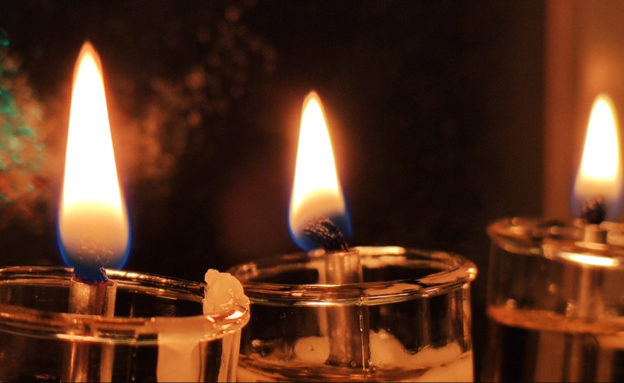Up until now the instructions given to Moses have focused on the construction of the tabernacle, its contents, and the surrounds. But houses do not keep themselves; they need someone to maintain it. For most of us, that person looks back in the mirror. Those with wealth or inclination outsource some or all of it. For God, that duty of service was set aside for the priests.
In this section of text, we transition to a discussion of the various priestly duties in God’s House. After touching briefly on the task of keeping oil in the tabernacle lamp, an important role of the priesthood, God explains the necessary clothing requirements for the priests. For the High Priest, an additional garment is described. In these roles and garments, we see a picture of Christ and his work for us and our salvation.
In chapter 24, God described the creation of a lampstand which housed various lamps to cast light inside what would otherwise be a very dark tent. But lamps need something to provide light, and since electricity was not readily available as a power source, God commanded the use of oil lamps to provide light.
The Israelites were commanded to continually bring olive oil to the priests for the tabernacle light (v.20). Olive oil burns cleanly, so there would be very little smoke to obscure vision.
The lamps would need regular tending, to ensure the light did not go out. So in the “tent of meeting” (the tabernacle where God met the priests who represented Israel), priests would have to tend the lamp through the night to keep the light going (v.21).
Since this represented God’s presence, it was an extremely important job. It was a “statute forever” (v.21) not only because it was an ongoing duty, but because it pointed forward to Jesus who is the true light of the world.
Since it was priests who were responsible for keeping the tabernacle well lit, they needed to be dressed for the role. Chapter 28 elaborates on these garments.
The role of priest was not an everyday role which was advertised in the local news, but a calling. For this role, God set apart Moses’ brother Aaron and his sons to serve as priests (v.1).
Since the priests were set apart for God’s service, would come into contact with holy items, and would come closer to God’s presence than their fellow Israelites, their garments needed to meet a much higher standard. They were to wear garments that were holy, for glory and for beauty (v.2).
Skilled artisans were to make beautiful linen robes, which for Aaron as High Priest were to be accompanied by additional garments, which set Aaron and his son’s apart from the common people to serve as God’s priests (vv.3-5).
The first of the additional garments for Aaron was an ephod, which seems to have looked like a tunic worn over his priestly clothes. Expensive yarns of gold, blue, purple, and scarlet were woven into it, making a bright and beautiful appearance (vv.6-8).
It did not end there. Precious onyx stones were selected to have engraved on them the tribes of Israel, enclosed in gold embellishments and with golden twisted chains (vv.9-11, 13-14). These stones were set on the shoulders of Aaron’s ephod, “for remembrance” (v.12).
In effect, these stones were symbolic reminders to Israel that the High Priest served God on their behalf. He literally and figuratively bore the twelve tribes of Israel on his shoulders, as he served in the Tabernacle and once a year entered the Most Holy Place where God’s presence with his people dwelt, to make intercession for their sins.
These garments portrayed a beautiful message to the Israelites, and likewise they portray a beautiful message to us through the connection between these garments and Christ, our great High Priest. Like Aaron and the priests, Jesus too needed to be robed in holiness, beauty, and glory.
But Jesus’ robes were not symbolic, they were of his very nature as truly God, becoming truly Man that he might serve us before God. And they were proved as holy through Jesus’ perfect, sinless life, fulfilling all righteousness and continually doing God’s will.
And like Aaron bore an ephod with the names of Israel’s sons as a remembrance before God, Jesus bore us before God too when he took our sins upon his shoulders upon the Cross, to bear a perfect and once for all sacrifice for our sins. After rising from the dead and ascending to Heaven, Christ continues to bear us up as he intercedes for us at God’s right hand, until he returns one day in power and glory.
Jesus, the true light of the world, bears witness to God’s love in a dark world. And Jesus’ intercession cleanses us from the sins which separate us from God’s presence. His righteousness, given to us, clothes us in holy, glorious, beautiful garments that we too may serve as priests for God’s glory, witnessing to the light of Christ in a dark and sinful world.


